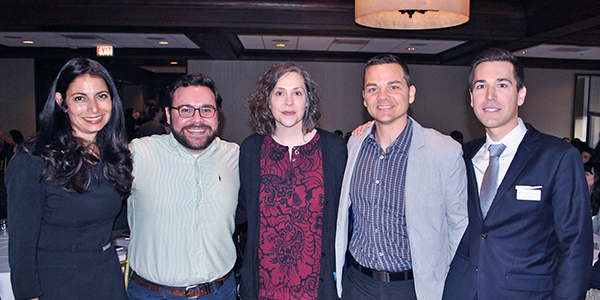Employee engagement consistently affects key performance outcomes. According to a Gallup study on employee engagement, top-quartile business units outperform bottom-quartile units by 10% in customer loyalty and engagement, 21% in profitability and 20% in productivity.
How do we engage, lead and develop people as the world of work is reshaped by cultural change?
On Thursday, February 16, 2017, Advanced Resources hosted another compelling Thought Leadership Event, “The Power of Culture in an Organization,” moderated by Jon Jelinek, Advanced Resources’ Human Resources Division Managing Director.
The panel discussion featured perspectives from four expert panelists, representing some of Chicago’s most renowned companies for culture and engagement:
- Jim Conti, Director of Talent at Sprout Social
- Michael Hahn, Motivational Speaker & Culture Transformation Expert of Beyond…Good Teams
- Jennifer Marszalek, Chief Talent Officer at Havas Chicago
- Rana Strellis, President at R Vision Consulting

Here’s a recap of the major themes shared throughout the session.
Culture should empower your employees.
Your organization has a diversity of team members and it’s important that your culture empowers the individual and is inclusive to the whole.
"Culture is about building the foundation upon which employees can stand and empowering them to find themselves within it."
-Jim Conti, Director of Talent at Sprout Social
An inclusive culture is a strong culture because it allows all team members to bring their passions and diverse perspectives to work, in ways that enable collaboration, thinking differently and acting innovatively. Culture is about creating a space where every employee can find their place and way to make an impact for the organization.
Whether it’s an entry level employee, tenured manager or C-suite executive, everyone should feel enabled to bring their true selves inside the four walls of their office every day. For this reason, every hire is crucial to your culture. It’s better to be understaffed with quality employees than fully staffed with toxic employees.
Read: Hire Better: A Guide to Interviewing for Culture Fit
Your culture should be an enabler of your strategy.
Your culture is unique and it enables you to think differently and do things differently. It’s not a standalone thing; it supports the business and drives it. On a grand scale, culture can become a key differentiator and provide your organization a competitive advantage in the marketplace. For example, some organizations partner with different communities, groups, or even government organizations, on the basis of a common mission or shared goal.
By aligning strategy and culture to become more involved in the world around you, you lay the foundations for your organization, and enroll team members to be a part of something with purpose and real meaning.
Your culture can also support your strategy on a small scale through policies and guiding principles that enable desirable behavior. For example, if you have a customer-centric strategy, your culture can enable those customer-centric behaviors by having teams sit together and collaborate openly on a day-to-day basis.
It’s important to understand that behaviors affect results and behind those behaviors is your culture, which is the environment your employees work in. The way teams sit, how they communicate, organize, collaborate, and decision-make all emerge from the guiding principles of your organizational culture.
Data shows that organizations whose culture and strategy align, outperform others.
Bring your culture to life.
A common question among HR practitioners is, “After we’ve built out our culture formally, how do we let it develop informally and grow organically?” It’s important that your organization is constantly communicating about the ways your culture has manifested and how people are living it and bringing it to life.
One of the best ways to bring your culture to life is through storytelling. Having people share their stories of what they were doing to live out your values and culture is very powerful. Tell the story of what they did to provide “service excellence” or “patient centricity,” and make them feel like a local celebrity and celebrate it. Although it may seem organic at the time, there should be a very structured way of storytelling that happens behind the scenes.
Bringing your culture to life is a combination of art and science. As you know, culture happens through communication, so enable your employees to communicate openly. Informally, that can come to life around common interests, like posting videos of your cat into the “Cat Channel” on Slack. Or in formal communication, your culture comes to life during the challenging conversations. It’s important that everyone feels comfortable getting and giving feedback, asking questions, managing up – your culture defines how your organization communicates and communication matters.
At the end of the day, your culture truly relies on your leaders to bring it together. Whether or not you realize it, your people watch your leaders constantly – what they say and do, the things and people they recognize, hiring decisions, budget decisions, and everything else as a reflection of your perpetual culture.
Read: HR Insights Magazine Finding (And Keeping) Hidden Leaders In Your Company
Thank you to all who attended our Thought Leadership Event on February 16th and thank you to our panelists for sharing their valuable perspectives and providing actionable insights on the power of organizational culture. Relive the morning of learning and networking through our Facebook album posted on the Advanced Resources Facebook page.

.png)
-2.png)
